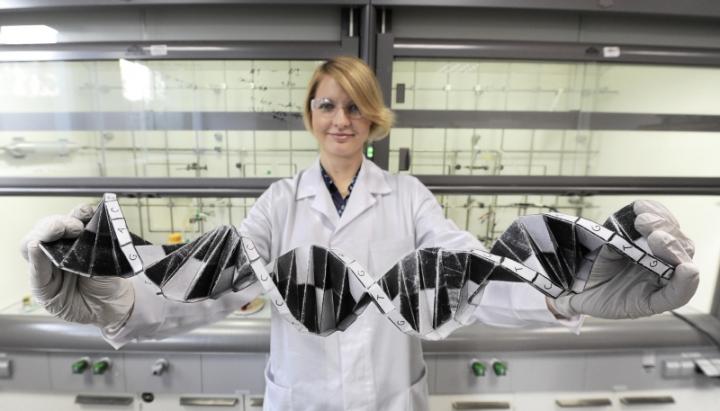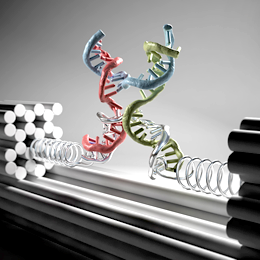There’s a lot of talk and handwringing about Canada’s health care system, which ebbs and flows in almost predictable cycles. Jesse Hirsh in a May 16, 2017 ‘Viewpoints’ segment (an occasional series run as part the of the CBC’s [Canadian Broadcasting Corporation] flagship, daily news programme, The National) dared to reframe the discussion as one about technology and ‘those who get it’ [the technologically literate] and ‘those who don’t’, a state Hirsh described as being illiterate as you can see and hear in the following video.
I don’t know about you but I’m getting tired of being called illiterate when I don’t know something. To be illiterate means you can’t read and write and as it turns out I do both of those things on a daily basis (sometimes even in two languages). Despite my efforts, I’m ignorant about any number of things and those numbers keep increasing day by day. BTW, Is there anyone who isn’t having trouble keeping up?
Moving on from my rhetorical question, Hirsh has a point about the tech divide and about the need for discussion. It’s a point that hadn’t occurred to me (although I think he’s taking it in the wrong direction). In fact, this business of a tech divide already exists if you consider that people who live in rural environments and need the latest lifesaving techniques or complex procedures or access to highly specialized experts have to travel to urban centres. I gather that Hirsh feels that this divide isn’t necessarily going to be an urban/rural split so much as an issue of how technically literate you and your doctor are. That’s intriguing but then his argumentation gets muddled. Confusingly, he seems to be suggesting that the key to the split is your access (not your technical literacy) to artificial intelligence (AI) and algorithms (presumably he’s referring to big data and data analytics). I expect access will come down more to money than technological literacy.
For example, money is likely to be a key issue when you consider his big pitch is for access to IBM’s Watson computer. (My Feb. 28, 2011 posting titled: Engineering, entertainment, IBM’s Watson, and product placement focuses largely on Watson, its winning appearances on the US television game show, Jeopardy, and its subsequent adoption into the University of Maryland’s School of Medicine in a project to bring Watson into the examining room with patients.)
Hirsh’s choice of IBM’s Watson is particularly interesting for a number of reasons. (1) Presumably there are companies other than IBM in this sector. Why do they not rate a mention? (2) Given the current situation with IBM and the Canadian federal government’s introduction of the Phoenix payroll system (a PeopleSoft product customized by IBM), which is a failure of monumental proportions (a Feb. 23, 2017 article by David Reevely for the Ottawa Citizen and a May 25, 2017 article by Jordan Press for the National Post), there may be a little hesitation, if not downright resistance, to a large scale implementation of any IBM product or service, regardless of where the blame lies. (3) Hirsh notes on the home page for his eponymous website,
I’m presently spending time at the IBM Innovation Space in Toronto Canada, investigating the impact of artificial intelligence and cognitive computing on all sectors and industries.
Yes, it would seem he has some sort of relationship with IBM not referenced in his Viewpoints segment on The National. Also, his description of the relationship isn’t especially illuminating but perhaps it.s this? (from the IBM Innovation Space – Toronto Incubator Application webpage),
Our incubator
The IBM Innovation Space is a Toronto-based incubator that provides startups with a collaborative space to innovate and disrupt the market. Our goal is to provide you with the tools needed to take your idea to the next level, introduce you to the right networks and help you acquire new clients. Our unique approach, specifically around client engagement, positions your company for optimal growth and revenue at an accelerated pace.
…
OUR SERVICES
IBM Bluemix
IBM Global Entrepreneur
Softlayer – an IBM Company
WatsonStartups partnered with the IBM Innovation Space can receive up to $120,000 in IBM credits at no charge for up to 12 months through the Global Entrepreneurship Program (GEP). These credits can be used in our products such our IBM Bluemix developer platform, Softlayer cloud services, and our world-renowned IBM Watson ‘cognitive thinking’ APIs. We provide you with enterprise grade technology to meet your clients’ needs, large or small.
Collaborative workspace in the heart of Downtown Toronto
Mentorship opportunities available with leading experts
Access to large clients to scale your startup quickly and effectively
Weekly programming ranging from guest speakers to collaborative activities
Help with funding and access to local VCs and investors
Final comments
While I have some issues with Hirsh’s presentation, I agree that we should be discussing the issues around increased automation of our health care system. A friend of mine’s husband is a doctor and according to him those prescriptions and orders you get when leaving the hospital? They are not made up by a doctor so much as they are spit up by a computer based on the data that the doctors and nurses have supplied.
GIGO, bias, and de-skilling
Leaving aside the wonders that Hirsh describes, there’s an oldish saying in the computer business, garbage in/garbage out (gigo). At its simplest, who’s going to catch a mistake? (There are lots of mistakes made in hospitals and other health care settings.)
There are also issues around the quality of research. Are all the research papers included in the data used by the algorithms going to be considered equal? There’s more than one case where a piece of problematic research has been accepted uncritically, even if it get through peer review, and subsequently cited many times over. One of the ways to measure impact, i.e., importance, is to track the number of citations. There’s also the matter of where the research is published. A ‘high impact’ journal, such as Nature, Science, or Cell, automatically gives a piece of research a boost.
There are other kinds of bias as well. Increasingly, there’s discussion about algorithms being biased and about how machine learning (AI) can become biased. (See my May 24, 2017 posting: Machine learning programs learn bias, which highlights the issues and cites other FrogHeart posts on that and other related topics.)
These problems are to a large extent already present. Doctors have biases and research can be wrong and it can take a long time before there are corrections. However, the advent of an automated health diagnosis and treatment system is likely to exacerbate the problems. For example, if you don’t agree with your doctor’s diagnosis or treatment, you can search other opinions. What happens when your diagnosis and treatment have become data? Will the system give you another opinion? Who will you talk to? The doctor who got an answer from ‘Watson”? Is she or he going to debate Watson? Are you?
This leads to another issue and that’s automated systems getting more credit than they deserve. Futurists such as Hirsh tend to underestimate people and overestimate the positive impact that automation will have. A computer, data analystics, or an AI system are tools not gods. You’ll have as much luck petitioning one of those tools as you would Zeus.
The unasked question is how will your doctor or other health professional gain experience and skills if they never have to practice the basic, boring aspects of health care (asking questions for a history, reading medical journals to keep up with the research, etc.) and leave them to the computers? There had to be a reason for calling it a medical ‘practice’.
There are definitely going to be advantages to these technological innovations but thoughtful adoption of these practices (pun intended) should be our goal.
Who owns your data?
Another issue which is increasingly making itself felt is ownership of data. Jacob Brogan has written a provocative May 23, 2017 piece for slate.com asking that question about the data Ancestry.com gathers for DNA testing (Note: Links have been removed),
AncestryDNA’s pitch to consumers is simple enough. For $99 (US), the company will analyze a sample of your saliva and then send back information about your “ethnic mix.” While that promise may be scientifically dubious, it’s a relatively clear-cut proposal. Some, however, worry that the service might raise significant privacy concerns.
After surveying AncestryDNA’s terms and conditions, consumer protection attorney Joel Winston found a few issues that troubled him. As he noted in a Medium post last week, the agreement asserts that it grants the company “a perpetual, royalty-free, world-wide, transferable license to use your DNA.” (The actual clause is considerably longer.) According to Winston, “With this single contractual provision, customers are granting Ancestry.com the broadest possible rights to own and exploit their genetic information.”
…
Winston also noted a handful of other issues that further complicate the question of ownership. Since we share much of our DNA with our relatives, he warned, “Even if you’ve never used Ancestry.com, but one of your genetic relatives has, the company may already own identifiable portions of your DNA.” [emphasis mine] Theoretically, that means information about your genetic makeup could make its way into the hands of insurers or other interested parties, whether or not you’ve sent the company your spit. (Maryam Zaringhalam explored some related risks in a recent Slate article.) Further, Winston notes that Ancestry’s customers waive their legal rights, meaning that they cannot sue the company if their information gets used against them in some way.
Over the weekend, Eric Heath, Ancestry’s chief privacy officer, responded to these concerns on the company’s own site. He claims that the transferable license is necessary for the company to provide its customers with the service that they’re paying for: “We need that license in order to move your data through our systems, render it around the globe, and to provide you with the results of our analysis work.” In other words, it allows them to send genetic samples to labs (Ancestry uses outside vendors), store the resulting data on servers, and furnish the company’s customers with the results of the study they’ve requested.
Speaking to me over the phone, Heath suggested that this license was akin to the ones that companies such as YouTube employ when users upload original content. It grants them the right to shift that data around and manipulate it in various ways, but isn’t an assertion of ownership. “We have committed to our users that their DNA data is theirs. They own their DNA,” he said.
…
I’m glad to see the company’s representatives are open to discussion and, later in the article, you’ll see there’ve already been some changes made. Still, there is no guarantee that the situation won’t again change, for ill this time.
What data do they have and what can they do with it?
It’s not everybody who thinks data collection and data analytics constitute problems. While some people might balk at the thought of their genetic data being traded around and possibly used against them, e.g., while hunting for a job, or turned into a source of revenue, there tends to be a more laissez-faire attitude to other types of data. Andrew MacLeod’s May 24, 2017 article for thetyee.ca highlights political implications and privacy issues (Note: Links have been removed),
After a small Victoria [British Columbia, Canada] company played an outsized role in the Brexit vote, government information and privacy watchdogs in British Columbia and Britain have been consulting each other about the use of social media to target voters based on their personal data.
The U.K.’s information commissioner, Elizabeth Denham [Note: Denham was formerly B.C.’s Office of the Information and Privacy Commissioner], announced last week [May 17, 2017] that she is launching an investigation into “the use of data analytics for political purposes.”
The investigation will look at whether political parties or advocacy groups are gathering personal information from Facebook and other social media and using it to target individuals with messages, Denham said.
B.C.’s Office of the Information and Privacy Commissioner confirmed it has been contacted by Denham.
Macleod’s March 6, 2017 article for thetyee.ca provides more details about the company’s role (note: Links have been removed),
The “tiny” and “secretive” British Columbia technology company [AggregateIQ; AIQ] that played a key role in the Brexit referendum was until recently listed as the Canadian office of a much larger firm that has 25 years of experience using behavioural research to shape public opinion around the world.
The larger firm, SCL Group, says it has worked to influence election outcomes in 19 countries. Its associated company in the U.S., Cambridge Analytica, has worked on a wide range of campaigns, including Donald Trump’s presidential bid.
In late February [2017], the Telegraph reported that campaign disclosures showed that Vote Leave campaigners had spent £3.5 million — about C$5.75 million [emphasis mine] — with a company called AggregateIQ, run by CEO Zack Massingham in downtown Victoria.
That was more than the Leave side paid any other company or individual during the campaign and about 40 per cent of its spending ahead of the June referendum that saw Britons narrowly vote to exit the European Union.
…
According to media reports, Aggregate develops advertising to be used on sites including Facebook, Twitter and YouTube, then targets messages to audiences who are likely to be receptive.
…
The Telegraph story described Victoria as “provincial” and “picturesque” and AggregateIQ as “secretive” and “low-profile.”
Canadian media also expressed surprise at AggregateIQ’s outsized role in the Brexit vote.
The Globe and Mail’s Paul Waldie wrote “It’s quite a coup for Mr. Massingham, who has only been involved in politics for six years and started AggregateIQ in 2013.”
Victoria Times Colonist columnist Jack Knox wrote “If you have never heard of AIQ, join the club.”
The Victoria company, however, appears to be connected to the much larger SCL Group, which describes itself on its website as “the global leader in data-driven communications.”
In the United States it works through related company Cambridge Analytica and has been involved in elections since 2012. Politico reported in 2015 that the firm was working on Ted Cruz’s presidential primary campaign.
And NBC and other media outlets reported that the Trump campaign paid Cambridge Analytica millions to crunch data on 230 million U.S. adults, using information from loyalty cards, club and gym memberships and charity donations [emphasis mine] to predict how an individual might vote and to shape targeted political messages.
…
That’s quite a chunk of change and I don’t believe that gym memberships, charity donations, etc. were the only sources of information (in the US, there’s voter registration, credit card information, and more) but the list did raise my eyebrows. It would seem we are under surveillance at all times, even in the gym.
In any event, I hope that Hirsh’s call for discussion is successful and that the discussion includes more critical thinking about the implications of Hirsh’s ‘Brave New World’.


